Lgll book v6

Diagnoses, Therapies, and Hope
Rare Genomics Institute and RareShare
Please consult experts and medical
personnel for any medical conditions.
The information in this eBook and any other Rare Genomics Institute (RGI) eBook, is for educational purposes only. It should not be used for
personal diagnostic or treatment purposes. If you have questions regarding a medical condition, always seek the advice of your physician or
other qualified health care professional.
The content in this eBook is not, and should not be used as, as a source of medical advice, or as a means of or resource for making medical, genet-
ic or other decisions. You should contact an appropriate health care professional before making any such decisions. The editors, contributors and
other persons and organizations affiliated with this eBook cannot and will not offer individual medical advice or other advice.
While efforts have been made to include accurate and unbiased information in this eBook, we do not guarantee the accuracy or timeliness of any
such information. We encourage feedback concerning possible errors, but we accept no responsibility for any errors, omissions or inaccuracies,
or for any adverse consequences of any kind arising from the use of the content within this eBook. Unless stated otherwise, any links to third-par-
ty websites within this eBook do not amount to an endorsement of that site or its content.
RGI is, within this eBook, providing certain information about rare diseases, genomics, case studies, and other information. The comments are
Legal Disclaimer based on professional suggestions, published experience, experiences of families of children with rare diseases, interviews and other materials,
but do not represent therapeutic recommendations or prescriptions of any type. For any specific information and advice, consult your personal
physician or other medical professionals.
Any reference to a commercial or noncommercial product, process, service or company is not an endorsement or recommendation by the RGI or
any contributor. Neither RGI nor any contributor endorses or recommends products, services or manufacturers. Neither RGI nor any other
contributor assumes any liability whatsoever for the use or contents of any product or service mentioned. Neither RGI nor any other contributors
are responsible for the contents of any "off-site" Internet information referenced by or linked to RGI's Internet website. The RGI website is for infor-
mational purposes only and is not a substitute for medical advice, diagnosis or treatment.
We may link to websites, including those of third-party content providers, that have different privacy policies and practices from those of RGI.
Neither RGI nor any contributor assumes any responsibility for the policies or practices of such linked sites, and encourage you to become
acquainted with them prior to use.
Copyright 2014 - Rare Genomics Institute (RGI) – All Rights Reserved - All copyrighted photos, logos etc., are property of their respective
owners. In addition, under any set of circumstances, no portion of this eBook may be distributed or excerpted without also including this
disclaimer, in its full and unmodified form, at both the front and back of any such materials.
Rare Genomics Institute is a 501(c)(3) non-profit organization focused on diagnosing and treating children with rare diseases and their families.
Rare Genomics Institute
5225 Pooks Hill Rd, Suite 1701N
Bethesda, MD 20814
Please consult experts and medical
personnel for any medical conditions.
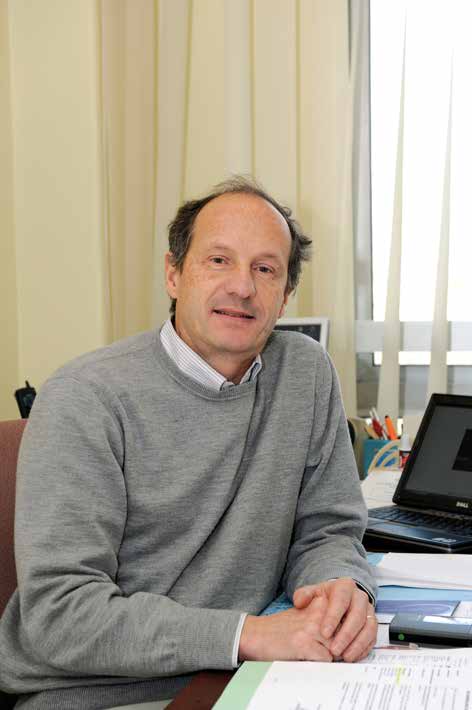
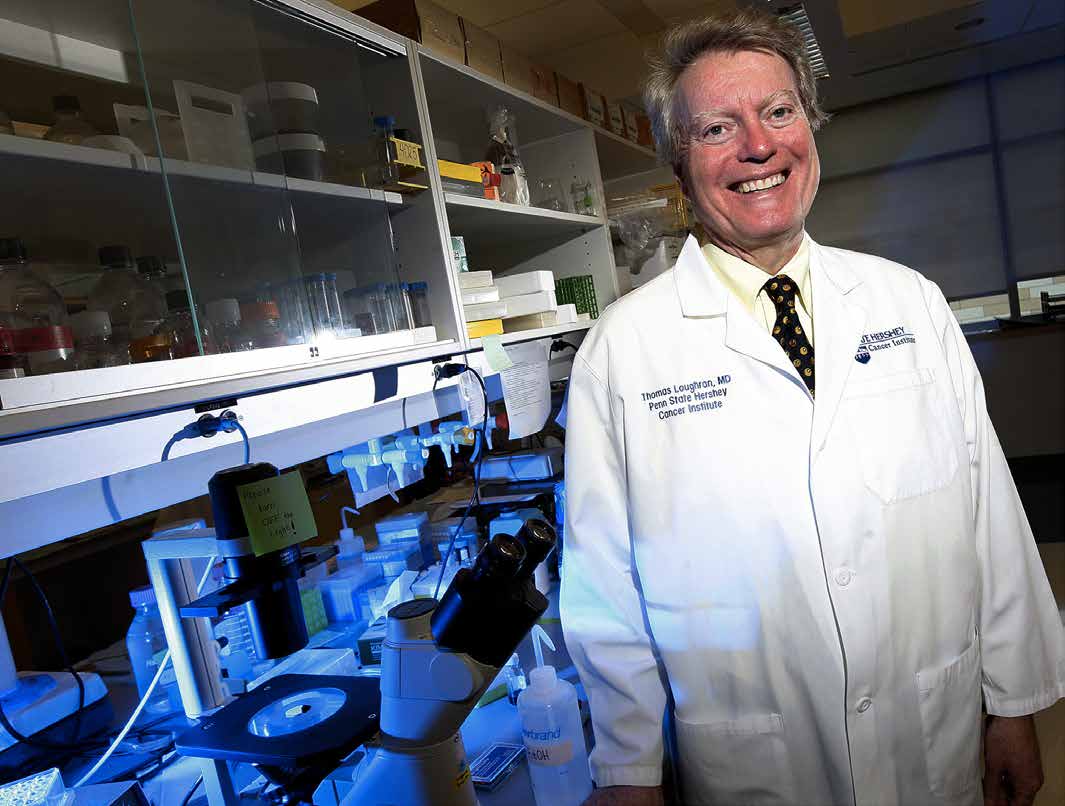
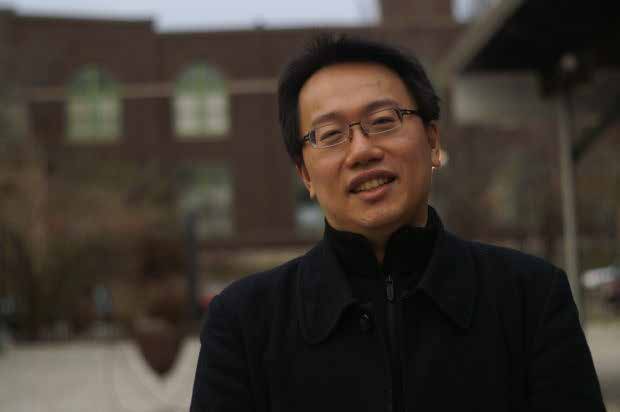
This eBook is based primarily on an "Ask the Expert" podcast with Dr Thomas
Loughran Jr. (University of Virginia), Dr Thierry Lamy (Rennes University, France)
and Dr Jimmy Lin (RGI/RareShare), on 13 February 2015. We would like to thank the
panelists for their participation.
Please consult experts and medical
personnel for any medical conditions.

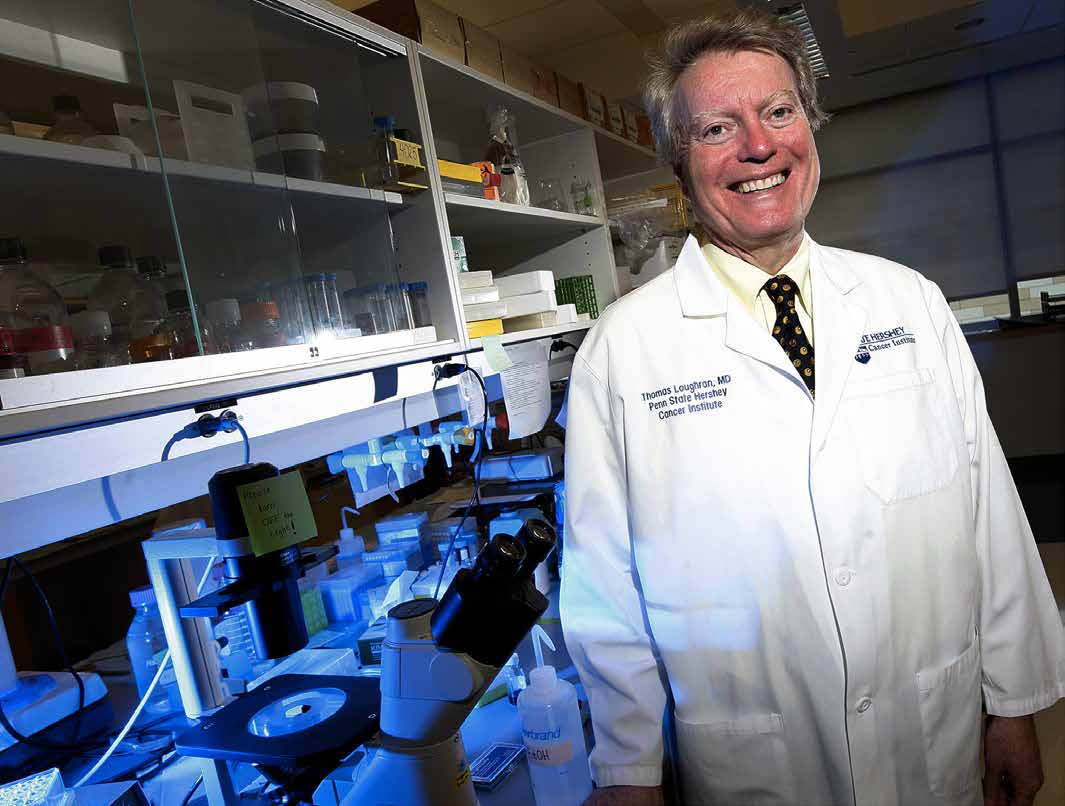
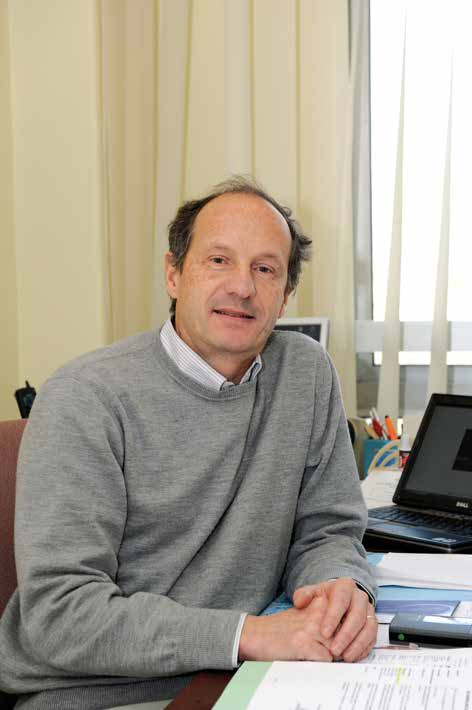
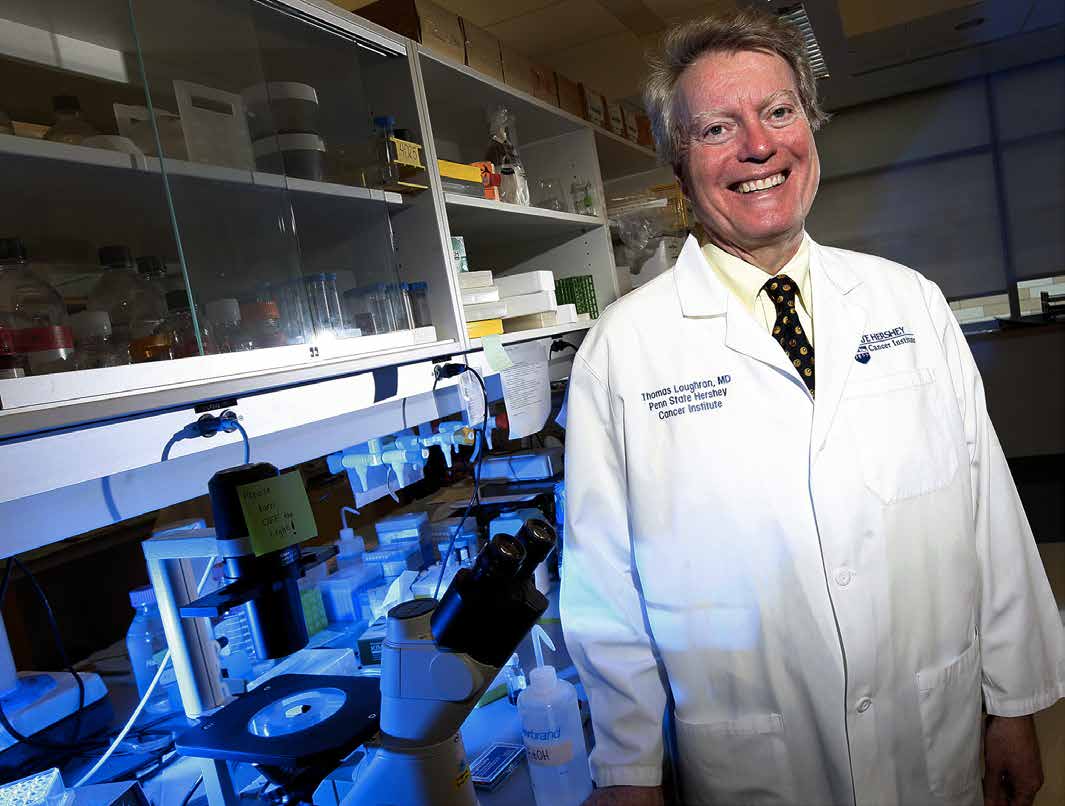
Dr. Loughran's career as a physician-scientist has been a testament to translational
research, with clinical observations leading to discoveries in the laboratory, and
laboratory research contributing to improved clinical treatments. He was instrumen-
tal in the discovery of large granular lymphocyte (LGL) leukemia (Ann Intern Med
102:169, 1985), and is considered the worldwide expert in this disease. He has pub-
lished numerous articles in high impact peer-reviewed journals including The New
England Journal of Medicine, Annals of Internal Medicine, Lancet, Journal of Clinical
Investigation, Journal of Clinical Oncology, and Blood.
Dr. Thomas Loughran
Dr Lamy was Professor in Hematology in 2001, he has been involved in Lymphoma
program of the GOELAMS group and was one of the pioneers of the creation of the
LYSA group (Lymphoma study association) in January 2012. His academic activities
include lymphoma clinical trials and LGL leukemia. He is also member of the research
unit INSERM U917 (Director Pr K. Tarte) which focuses on microenvironment and
lymphoma. He has published numerous articles in high impact peer-reviewed jour-
nals including The New England Journal of Medicine, Annals of Internal Medicine,
Lancet, Journal of Clinical Investigation, Journal of Clinical Oncology, and Blood.
Dr. Thierry Lamy
Please consult experts and medical
personnel for any medical conditions.
LGLL is a rare lymphoproliferative cancer that
Quick Facts on LGLL
affects white blood cells, called lymphocytes,
which help fight infection.
LGLL patients have enlarged lymphocytes, which
contain granules that can be seen in the blood
under a microscope.
LGLL affects T-cells, or less commonly, natural
killer (NK) cells.
Frequency ranges from 2-5 % of small lymphocytic
leukemias (around 1 in 250,000).
LGLL occurs more frequently in older adults, but
can affect people of all ages. The average age at
diagnosis is 60.
Please consult experts and medical
personnel for any medical conditions.
Acute vs Chronic LGLL
There are two subtypes of T-cell and NK-cell LGLL: chronic (slow growing) and
aggressive (fast-growing).
Although there are no confirmed conditions that cause the change from
chronic to acute phase, molecular analysis from studies have shown a germ line
configuration in both T-cell receptor beta-chain genes and T-cell receptor
tau-chain genes. Transformation of chronic LGL leukemia into an acute form is
associated with morphologic and karyotypic changes of the leukemic cells. It is
very exceptional for chronic diseases to become acute (reported just one or two
The most important test for diagnosis of LGLL is a full blood count followed
by a biopsy. The lymphocyte count may be normal or low (and lymph nodes are
not typically enlarged), and have an increased number of abnormal LGLL cells.The
requisite lymphocytosis of this disease is typically 2-20×109/L. Rheumatoid arthri-
tis (RA), Felty's syndrome, neutropenia, anemia and splenomegaly are the most
commonly identified clinical features for LGLL.
Q: How often should LGLL patients get
A: Doctors recommend performing a blood
test and CBC (complete blood count) every
four to six months, just to check that it re-
mains in the normal range.
Please consult experts and medical
personnel for any medical conditions.
Aggressive forms of LGLL are much rarer. There is an aggressive NK leuke-
mia that occurs primarily in East Asia and amongst natives in South and Cen-
tral America, with evidence that this disease is somehow related to infection
with another type of virus called the Epstein-Barr virus. An aggressive form of
T-cell LGLL is even rarer, and is perhaps associated with specific mutations of
There is limited data about which therapies work best with these aggres-
sive diseases, however therapies similar to those used to treat acute lympho-
blastic leukemia (ALL) are used. A clinical trial may be the best available treat-
The origin of a majority of cases is a trans-
formed CD8+ T-cell with clonal rearrange-
ments of T-cell receptor genes (β chain).
However, for a minority of cases, a CD8-
T-cell with clonal rearrangements of T-cell
receptor genes (γ chain) has been ob-
served. A gene called STAT-3 is abnormal
in many patients with LGLL, however, it is
not clear whether this is a cause of LGLL.
Scientists are currently looking at the
relationship between viral infection and
LGLL. There is increasing evidence point-
ing toward a viral infection trigger such as
HTLV1, TMV, and HPV, however, more re-
search needs to be done.
Please consult experts and medical
personnel for any medical conditions.
Q: Are there known risk factors for LGLL?
A: Besides a single study that showed a statistically increased incidence of
patients who are in the health-care field or have exposure to blood prod-
ucts, that turn out to have LGL leukemia, there has not been any large epi-
demiological studies to discover if there are any connections to any particu-
lar environmental factors. Researchers are currently looking at the possible
involvement of a new virus.
Please consult experts and medical
personnel for any medical conditions.
• Decline in the production of red blood
Signs and Symptoms
cells (red cell aplasia)• Lowered concentration of neutrophils, a
type of white cell (chronic neutropenia)• Decrease in the number of red cells (ane-
mia) occurs in about half of patients• Recurrent infections• Fever• Night sweats• Unintended weight loss• Enlargement of the spleen (splenomega-
ly) occurs in 25 to 50 percent of patients• Enlargement of the liver (hepatomegaly)
rarely occurs• Swollen lymph nodes (lymphadenopa-
thy) rarely occurs
Please consult experts and medical
personnel for any medical conditions.
Neutropenic patients, or patients with low neutrophil counts to
fight infections, often get serious bacterial infections like pneumonia,
skin, and sinus infections. Anemic patients, or patients with a low red
blood cell count, can experience extreme fatigue, tiredness, and short-
ness of breath. Patients may need transfusions if it's very severe. Finally,
patients may also experience autoimmune diseases, especially classic
"Approximately one-third of pa-
tients are asymptomatic at diagno-
sis, whereas two-thirds of patients
will become symptomatic during
the course of their disease."
Please consult experts and medical
personnel for any medical conditions.
There are a variety of treatments
available for LGLL, the most
common of which is drug (chemo)
therapy including oral cyclophos-
phamide, an alkylating agent; or
cyclosporine, an immunomodula-
tory drug. Immunosuppressive
drugs such as methotrexate may
also be given. Chemotherapy, stem
cell transplants, and surgery to
remove the spleen are less
common treatments for LGLL. Stem
cell and bone marrow transplants
can be effective in treating LGLL as
Please consult experts and medical
personnel for any medical conditions.
Q: Are there any new treatments in the near future?
A: Researchers are still working on new treatments and options for patients with LGLL.
The NIH is currently recruiting patients to study the effectiveness of the (Alemtuzum-
ab) Campath treatment for LGLL, and there are many new drugs that were found to
be effective in treating the disease. Currently, they are undergoing labs and studies,
and the results are quite promising. A group of drugs called purine analogues were
proven effective in treating the disease, and a particular drug called deoxycoformycin
has received positive responses from various patients. Future treatments may also
include farnesyltransferase inhibitors, a type of anticancer drug.
Please consult experts and medical
personnel for any medical conditions.
Q: Can STAT3 be used as a target, a way to we can inactivate or make better this gene
or if not, are there also some cutting edge therapies that you're excited about?
A: For the time being, the common therapies are mostly based on immunosuppres-
sive drugs. Three commonly used drugs are methotrexate, cyclosporine and the Cy-
toxan. These drugs have been effective in treating LGL leukemia, and although is it
uncertain which is the best one, it is a first line therapy that is recommended for
many first time patients. If the treatment is ineffective, you can switch it for another
one, cyclophosphamide, methotrexate cytoxan and cyclosporine. Usually in second
line therapy, you can also use drugs that purine analogs drugs and then maybe other
drugs but usually you can if you have obtained a good first clinical response, you can
re-use the first line therapy, use methotrexate for second time of Cytoxan or we can
switch and usually we can observe good clinical response with these three drugs.
Please consult experts and medical
personnel for any medical conditions.
Q: What therapies are available for the constant joint and muscle pain?
A: There are many different reasons for the cause of the pain - thus it is important to
determine how severe the pain is. Usually an over-the-counter or prescription non-
steroidal anti-inflammatory drug (NSAID) such as aspirin, ibuprofen (Advil, Motrin), or
naproxen sodium (Aleve) can alleviate the pain.
Please consult experts and medical
personnel for any medical conditions.
Q: What are some possible outcomes for LGLL patients?
A: For chronic LGLL patients, there is no significant effect on lifespan. The one major
exception to that is patients can still die from a sudden bacterial infection that
almost always occurs when the Neutrophil count is extremely low. There are certain-
ly many chronic co-morbidities (one or more additional diseases that accompany
LGLL) that go along with the disease, but don't really have an impact on longevity. A
lifestyle that incorporates good diet and exercise is recommended.
Please consult experts and medical
personnel for any medical conditions.
Common guidelines for good health
such as balanced diet, nutrition, exer-
cise, good lifestyle habits are import-
ant for all patients, including LGLL pa-
• Staying well-hydrated
• A diet rich in iron and low-fat proteins
• Spinach, kale or collard greens
• Other vegetables such as broccoli,
asparagus, and brussel sprouts
• Lean proteins such as chicken, turkey,
tuna, salmon, and shrimp
• Other proteins like beans and lentils
Please consult experts and medical
personnel for any medical conditions.
Dealing with Fatigue
If you're feeling fatigued, talk
with your doctor about what
factors might be causing your
fatigue and what you can do to
• Take short naps and rest
• Drink a lot of fluids and eat well
• Engage in light exercise
Please consult experts and medical
personnel for any medical conditions.
Q: How long should patients be on Cytoxan?
A: As Cytoxan has a toxicity level, patients typically use it for less than a year. Patients
can be on it for six months with 100 mg a day. The dose can then be lowered to 50
mg for the remaining 6 months of the year.
Q: How effective is Cytoxan, and what are the long term effects of its usage?
A: Cytoxan has shown to be quite effective as an alternative to methotrexate. Howev-
er, for older patients, it could lead to heart problems, including swelling of the heart
muscle, congestive heart failure, or heart disease.
Q: How long should patients be on Methotrexate?
Drug-Specific and M
A: Patients are typically given the drug for at least one year. At the four month mark,
the effectiveness of it can be evaluated. Typically, if patients are under a complete
remission without abnormal changes on the blood, methotrexate treatment can be
stopped after a year or two.
Please consult experts and medical
personnel for any medical conditions.
Q: How long should patients be on Cyclosporine?
A: Cyclosporine causes a risk of hypertension and kidney insufficiency. When pa-
tients are on this, they should constantly get tested. If either issue proliferates, pa-
tients should stop taking the drug.
Q: How should patients work with doctors to optimize their treatments?
A: There is a LGLL registry in the US, and a similar one exists in France. To get con-
nected with specialists, patients should seek the help of major cancer centers in the
US such as the National Cancer Institute (NCI).
Q: What does the future in terms of clinical trials/research/therapy look like for LGLL?
What are some tips for patients living with LGLL?
A: There are currently ongoing trials to further study LGLL. One such trial is recruiting pa-
tients with the disease. It can be found here:
Please consult experts and medical
personnel for any medical conditions.
Q: What are some recommendations for patients in terms of finding the latest research in
understanding about this disease?
A: There are many online articles that contain abundant information. They can be found
by searching up LGLL experts, such as Dr. Lamy and Dr. Loughran who have written many
articles, or by using a medical database such as PubMed. Although many articles are a bit
more technical, they are some of the best information that's out there.
One particular article written by Dr. Lamy and Dr. Loughran titled "How I treat LGL Leuke-
mia" is part of the ‘How I treat Series" that appears in Blood Journal. It acts a good overall
summary and a scientific reference. Another place to find scientific research is the LGL
leukemia foundation which provides great resources and patient stories.
Please consult experts and medical
personnel for any medical conditions.
This e-book was written and compiled by the scientific Rare Genomics team at
Marc Garneau Collegiate Institute in Toronto, Canada.
led by
Deepa Kushwaha, Ph.D.
photographs are under Creative Commons Zero licenses
Please consult experts and medical
personnel for any medical conditions.
donate today at
Source: https://cancer.uvahealth.com/LGLLeBookNew.pdf
NEXT 43_SEPTEMBER 12 Dorothée Baumann, de la série Pleasure Arousal Dominance, 2011 NEXT 43_SEPTEMBER 12_P2 RUBRIQUES / SECTIONS Chères lectrices, chers lecteurs de NEXT, L'actualité de la rentrée culturelle est d'une grande diversité et d'une extraordinaire richesse ; j'espère que vous aurez le plaisir d'en découvrir un aperçu ici. En 2012, le Festival Images à Vevey et les Journées photographiques de Bienne sont d'excellentes occasions pour voir de nombreuses expositions de photographie contemporaine d'un niveau international. NEAR contribue a la réflexion sur le livre d'artiste en vous proposant une journée de rencontres, à ne
The Stock Exchange of Hong Kong Limited takes no responsibility for the contents of thisannouncement, makes no representation as to its accuracy or completeness and expressly disclaimsany liability whatsoever for any loss howsoever arising from or in reliance upon the whole or anypart of the contents of this announcement. GREATERCHINA TECHNOLOGY GROUP LIMITED









